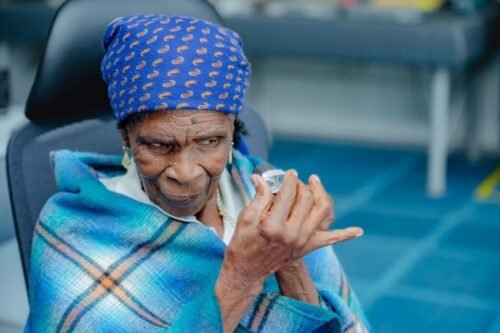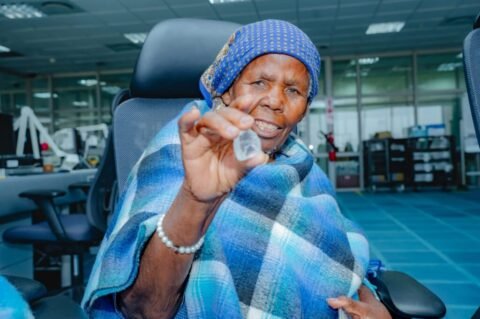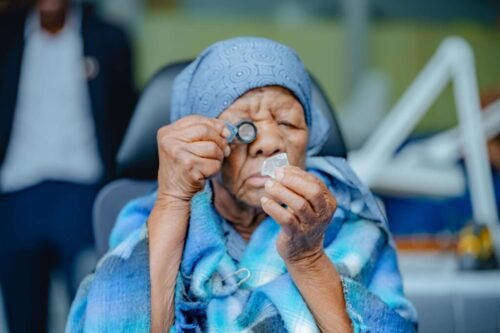De Beers’ vision for diamonds is inclusive and innovative

The socio-economic impact of natural diamonds, particularly in producing countries, is a key differentiator. De Beers is reinforcing this through its new agreements in Botswana, which include initiatives to foster local talent development and establish the groundbreaking “Diamonds for Development Fund.”
This fund is specifically designed to accelerate the diversification of Botswana’s economy, with investments focusing on critical areas such as green energy, tourism, and agriculture.
De Beers has committed an upfront investment of 1 billion Pula (approximately 74 million USD) to kickstart the fund, with further contributions over the next decade potentially totaling up to 10 billion Pula (approximately 740 million USD).
“This is proof of our belief in Botswana and its people, brilliant Batswana whose lives have been, and will continue to be, shaped by the opportunities natural diamonds have created,” Rowley remarked, crediting the Botswanan government for their vision and support in creating this initiative.
Responsible and sustainable production is an imperative for De Beers. As a global business involved in every stage of the diamond value chain, the company recognizes its significant impact and the urgent need for tangible action. De Beers is focused on achieving its Science Based Targets initiative (SBTi)-validated Scope 1, 2, and 3 carbon reduction targets by 2030, a commitment that makes them the only mining company to subscribe to such stringent and respected goals.
Sourcing renewable energy is a top priority, with significant announcements made this year in Namibia, Botswana, and South Africa. In Namibia, for instance, Namdeb and NamPower, the national power utility, have signed a Memorandum of Understanding for the development and integration of wind power projects into Namdeb’s mining operations and the national grid.
This demonstrates De Beers’ holistic approach to minimizing its environmental footprint while contributing to cleaner energy transitions in its operational regions.
The future of the diamond industry is set to be shaped by three powerful trends: digital traceability, local beneficiation, and sustainable production, according to Paul Rowley, Executive Vice President of Diamond Trading at De Beers Group.
Speaking at the Future of Mining Summit, Rowley outlined De Beers’ strategic direction, emphasizing their commitment to transparency,
socio-economic development, and environmental responsibility.
In an era where consumers demand to know the origin of their purchases, traceability has become paramount. De Beers is at the forefront of this movement. “From the start of this year, all De Beers rough diamonds above 1 carat in size have had a single country of Origin listed on the digital blockchain platform Tracr,” Rowley stated. This initiative ensures that every diamond’s journey is verifiable, ethical, and transparent, thereby building trust with both consumers and partners.
Tracr is hailed as a vital tool for the industry, being the only platform capable of providing traceability at scale. The recent announcement that Okavango Diamond Company (ODC) is now registering its diamonds on the platform further strengthens this ecosystem.
“The more diamonds we can trace from mine to finger,” Rowley explained, “the more we can tell consumers not only where their diamonds are from, but more importantly, whom they have touched on their journey and the real value they have created for the communities and countries in which they are produced.”
This heightened transparency differentiates natural diamonds from laboratory-grown diamonds (LGDs) by highlighting their significant socio-economic impact.



The socio-economic impact of natural diamonds, particularly in producing countries, is a key differentiator. De Beers is reinforcing this through its new agreements in Botswana, which include initiatives to foster local talent development and establish the groundbreaking “Diamonds for Development Fund.”
This fund is specifically designed to accelerate the diversification of Botswana’s economy, with investments focusing on critical areas such as green energy, tourism, and agriculture.
De Beers has committed an upfront investment of 1 billion Pula (approximately 74 million USD) to kickstart the fund, with further contributions over the next decade potentially totaling up to 10 billion Pula (approximately 740 million USD).
“This is proof of our belief in Botswana and its people, brilliant Batswana whose lives have been, and will continue to be, shaped by the opportunities natural diamonds have created,” Rowley remarked, crediting the Botswanan government for their vision and support in creating this initiative.
Responsible and sustainable production is an imperative for De Beers. As a global business involved in every stage of the diamond value chain, the company recognizes its significant impact and the urgent need for tangible action. De Beers is focused on achieving its Science Based Targets initiative (SBTi)-validated Scope 1, 2, and 3 carbon reduction targets by 2030, a commitment that makes them the only mining company to subscribe to such stringent and respected goals.
Sourcing renewable energy is a top priority, with significant announcements made this year in Namibia, Botswana, and South Africa. In Namibia, for instance, Namdeb and NamPower, the national power utility, have signed a Memorandum of Understanding for the development and integration of wind power projects into Namdeb’s mining operations and the national grid.
This demonstrates De Beers’ holistic approach to minimizing its environmental footprint while contributing to cleaner energy transitions in its operational regions.
The future of the diamond industry is set to be shaped by three powerful trends: digital traceability, local beneficiation, and sustainable production, according to Paul Rowley, Executive Vice President of Diamond Trading at De Beers Group.
Speaking at the Future of Mining Summit, Rowley outlined De Beers’ strategic direction, emphasizing their commitment to transparency,
socio-economic development, and environmental responsibility.
In an era where consumers demand to know the origin of their purchases, traceability has become paramount. De Beers is at the forefront of this movement. “From the start of this year, all De Beers rough diamonds above 1 carat in size have had a single country of Origin listed on the digital blockchain platform Tracr,” Rowley stated. This initiative ensures that every diamond’s journey is verifiable, ethical, and transparent, thereby building trust with both consumers and partners.
Tracr is hailed as a vital tool for the industry, being the only platform capable of providing traceability at scale. The recent announcement that Okavango Diamond Company (ODC) is now registering its diamonds on the platform further strengthens this ecosystem.
“The more diamonds we can trace from mine to finger,” Rowley explained, “the more we can tell consumers not only where their diamonds are from, but more importantly, whom they have touched on their journey and the real value they have created for the communities and countries in which they are produced.”
This heightened transparency differentiates natural diamonds from laboratory-grown diamonds (LGDs) by highlighting their significant socio-economic impact.



